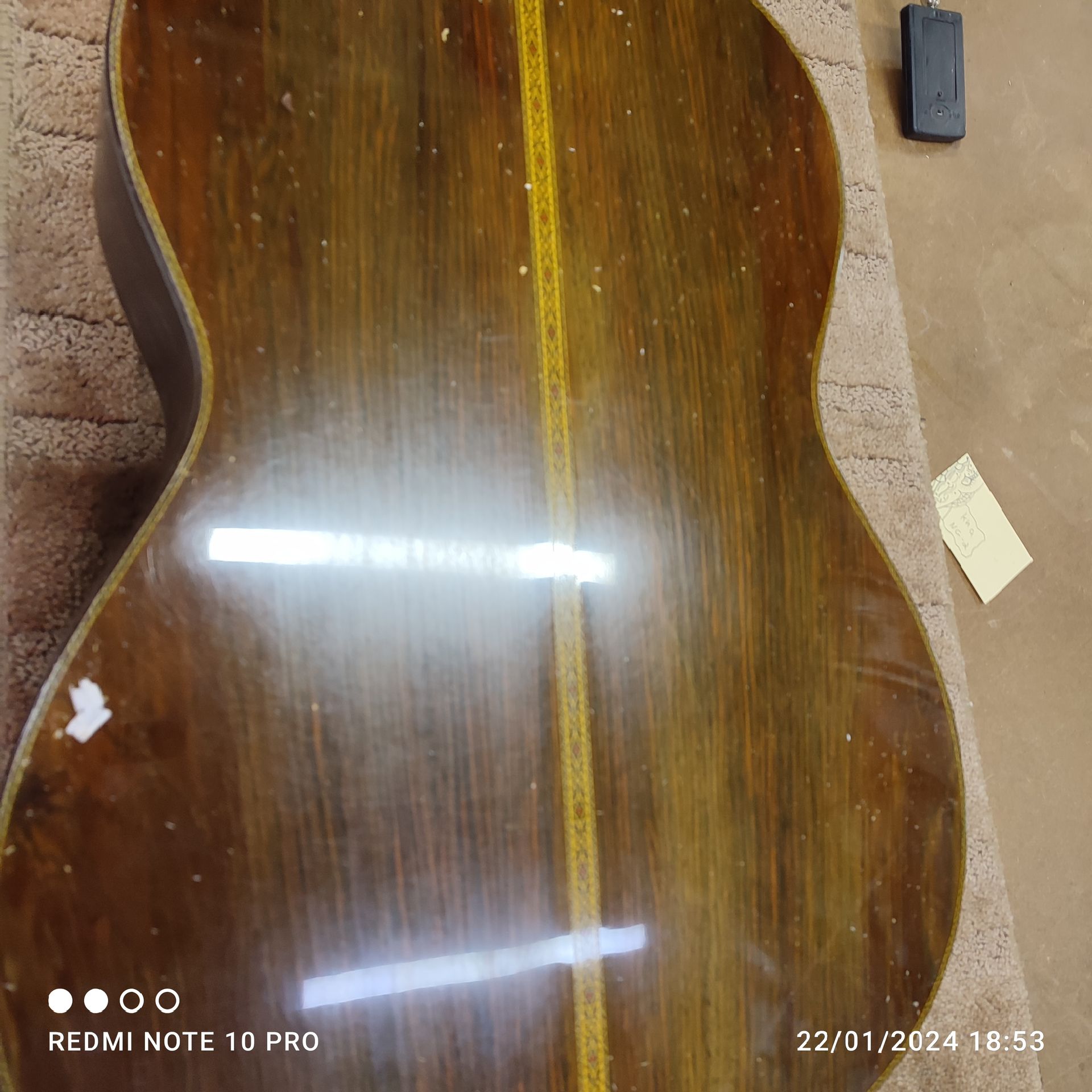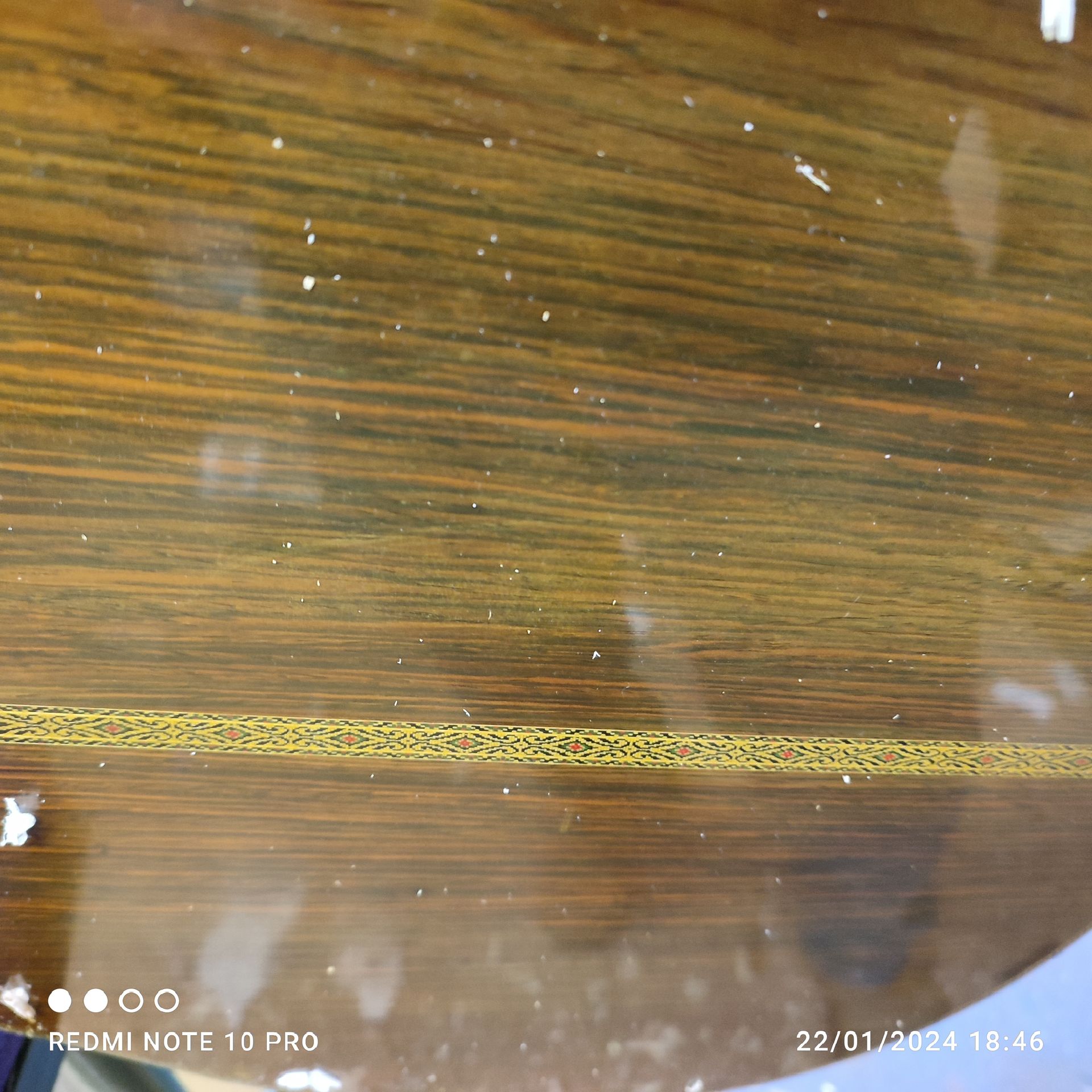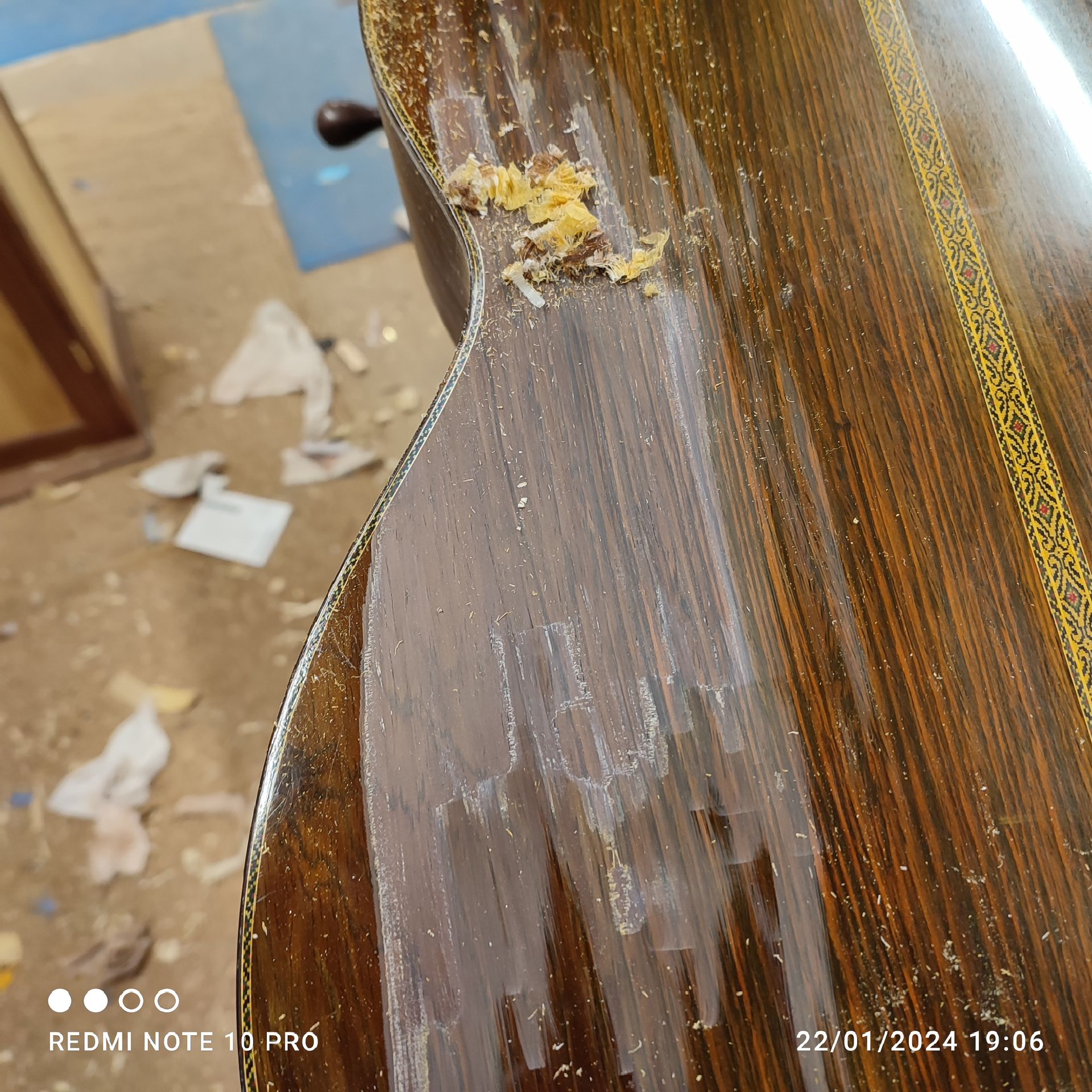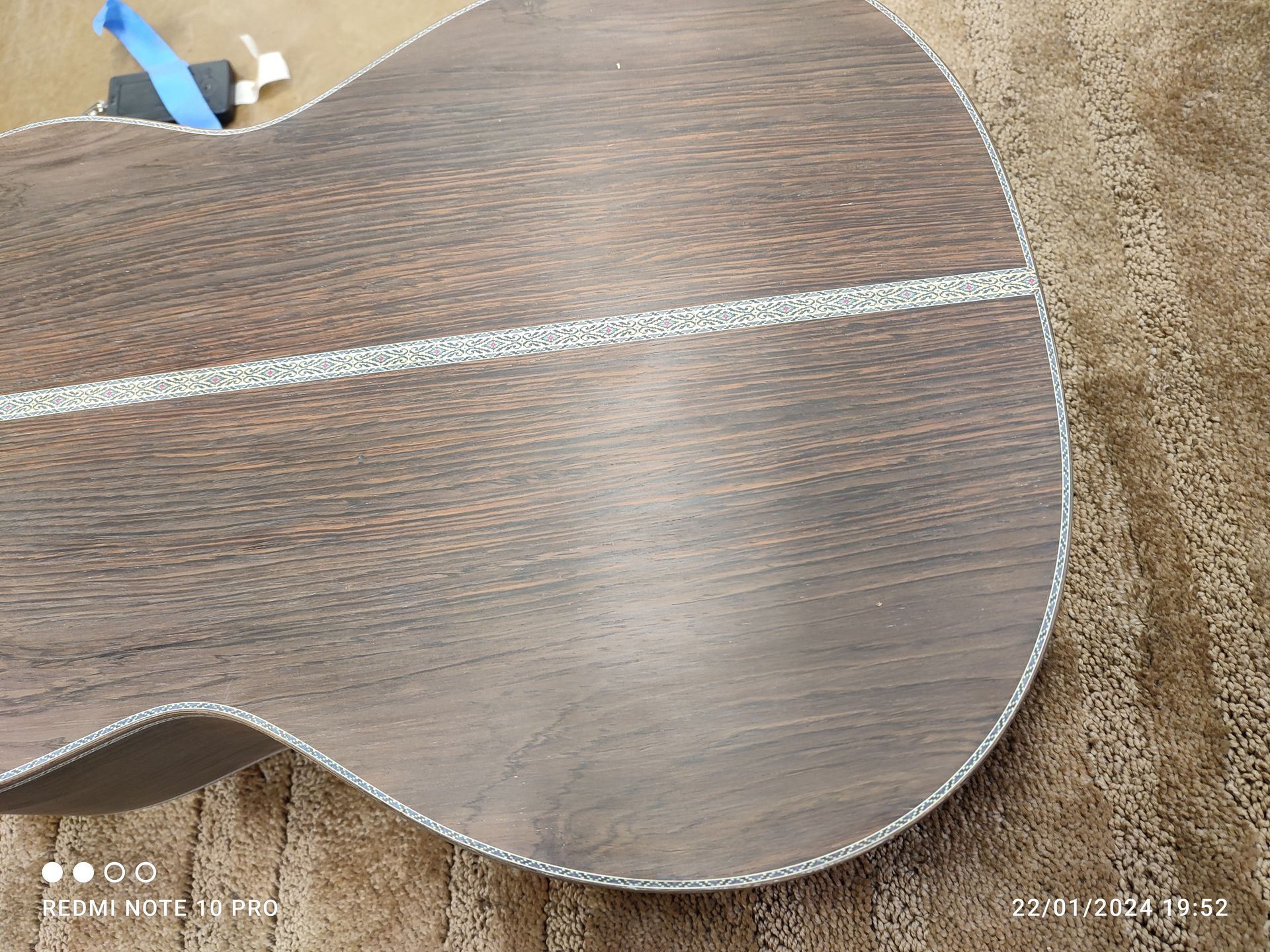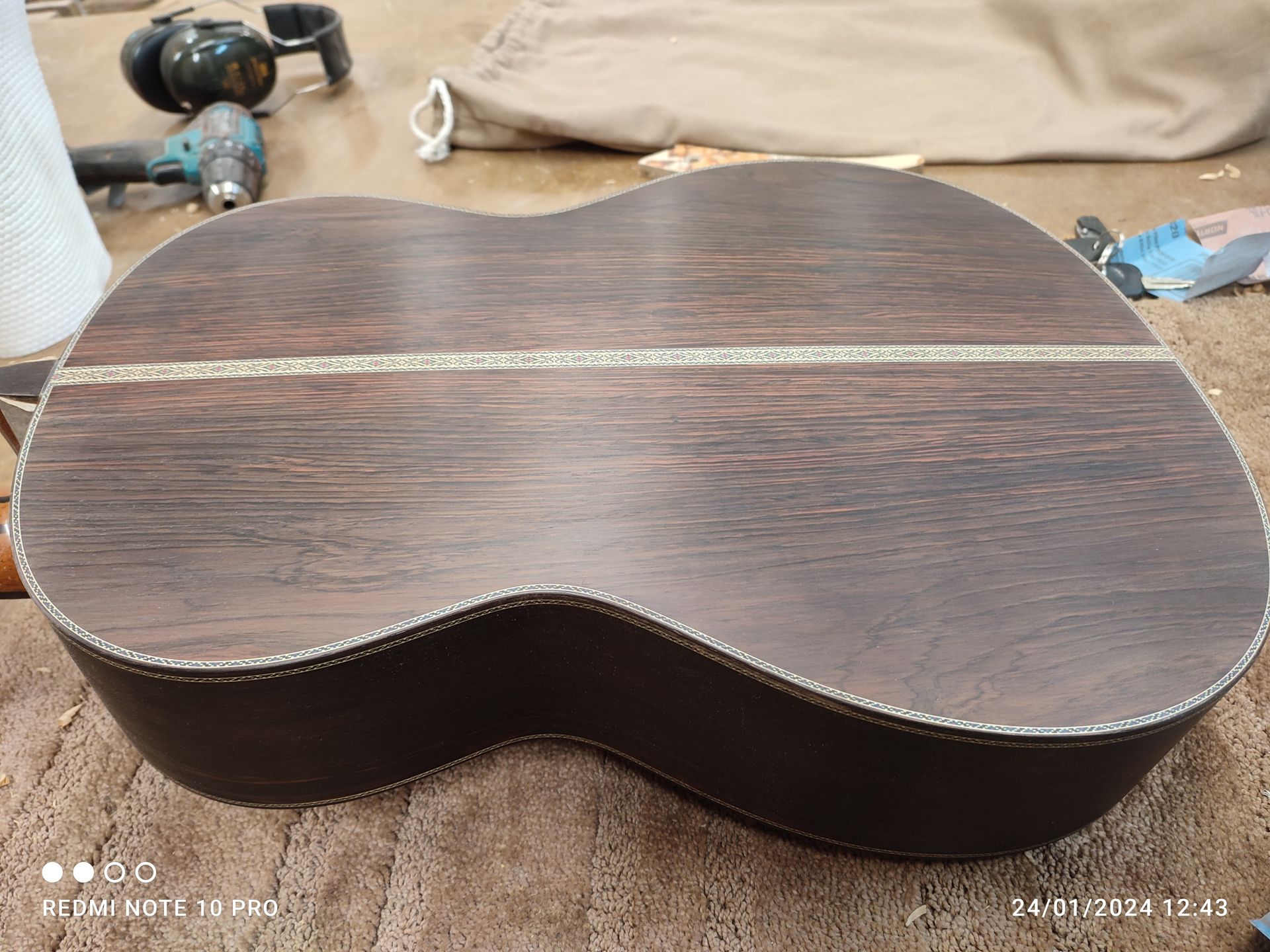Traditional instrument makers mostly stick with the traditional varnishes, be it oil varnish, spirit varnish, French polish or any combination of such, it has been preferred over generations to the synthetic choices.
Synthetic varnish has some advantages. Especially when new it is more protective and harder to scratch. it provides good protection for the wood, but it also comes at a great cost. this is best illustrated by the following pictures.
Here we see a 1979 Khono model 50 guitar, made of lovely brazillian rosewood. no cracks. no damage, it is in perfect condition except for the varnish which has has turned horribly yellow. The original owner feels that his once beautiful guitar no longer looks as it should. Here we can see the aged varnish, the guitar striped back to the bare wood, and the new varnish, which shows the original color of the guitar.
I advised the customer not to touch the soundboard. While I feel his sentiment for the back and sides too, this type of synthetic finish cannot be repaired or refreshed which means the only option is to completely strip it off and re finish. Complete removal of any finish will inevitably remove a small amount of wood, and while this is unlikely to effect anything on the back and sides, it could forever change the guitar if done to the soundboard.
While synthetic finishes might look great and give good protection in the short term, they can inevitably limit the lifespan of the instrument. The owners then must choose to either live with a terrible finish or risk altering the guitar.
In contrast to that, natural oil and shellac base varnishes age beautifully and are fully repairable without removing the finish. New finish can be added to the old and finish can be maintained over the decades and even centuries if the guitar lasts that long! since many of us are building our guitars with a significant life span in mind..... I believe the traditional finishes are still the superior choice.
